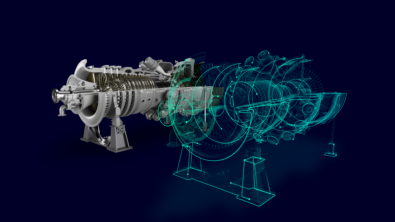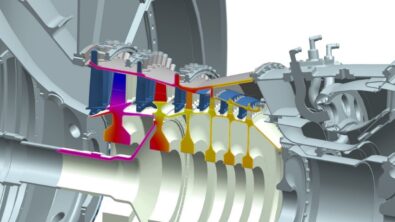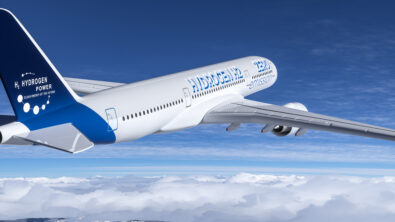Gas turbine simulations and butterflies: chasing beauty
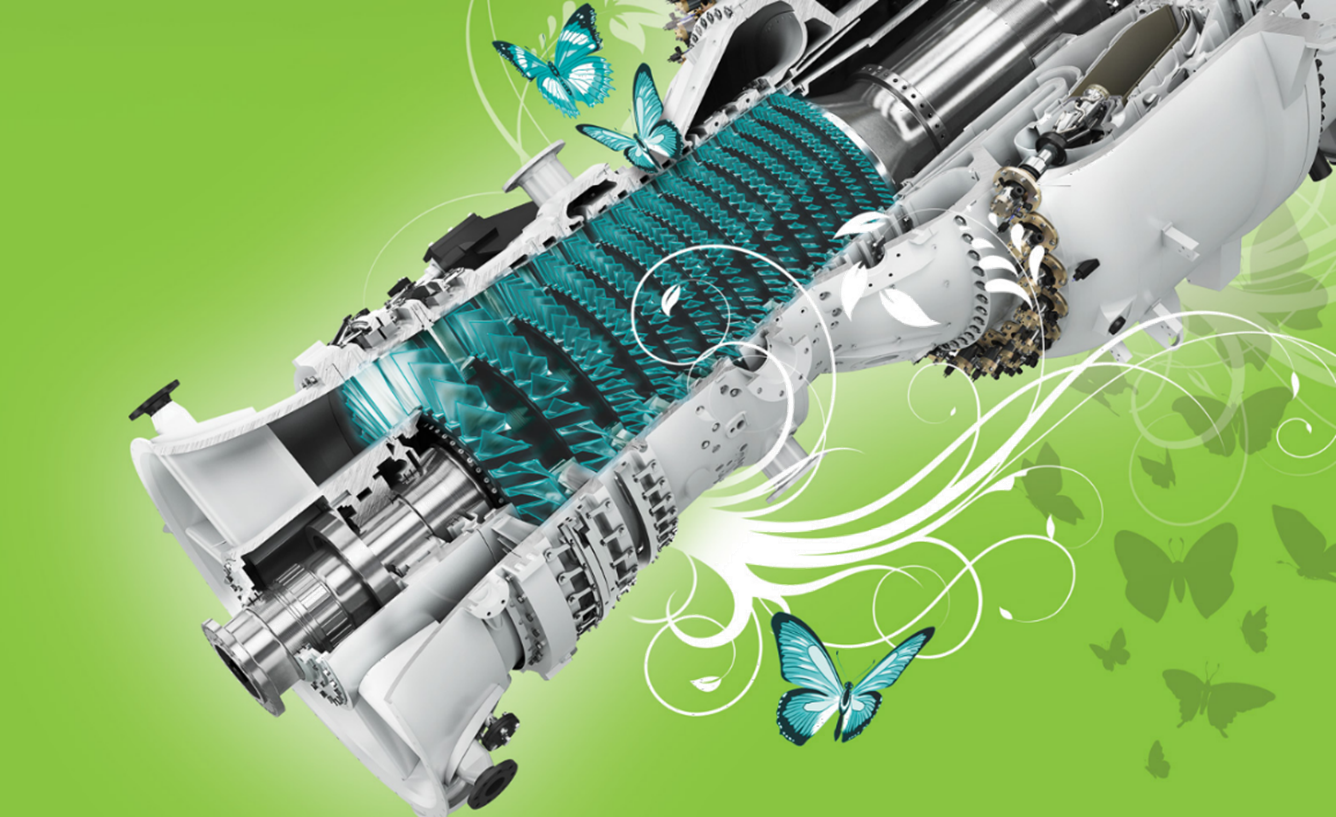
The beauty of gas turbines and nature’s wonders
There are those who say that beauty lies in the eye of the beholder. I say that beauty can be universal.You might think I’m crazy, but I often find the intricate and complex machinery of a gas turbine, along with the resulting simulation, to be incredibly beautiful. There is something mesmerizing with all the blades, valves, rotors, as well as fuel lines and wiring. The shape and structure of blades, vanes, channels, and cavities. From design experts, I have learned that a gut feeling is that a part and assembly should have an intuitive beauty to it. Otherwise, there is a big risk that it will fail. Maybe it is hard to explain, but a theory of mine is that the physics of fluids and structures must align and look natural. Almost like it comes from nature. This is counterintuitive as, once again, there are so many parts, components, wiring, alloys and composites. The pinnacle of human engineering. I happen to also enjoy the sight of the first butterfly in the spring. A sign that summer is coming, as well as all their various sizes and colors, as well as their flying pattern, is something that can make me smile and awe every time I see them.
Computational fluid dynamics for gas turbine simulations: art meets engineering
Just like gas turbines, computational fluid dynamics (CFD) simulations are also known for their ability to hypnotize people with their colourful results. And with more computational power we do more and more unsteady simulations with higher fidelity and more complex physics. And even further and faster with GPUs. And with advancements in machine learning, we can go even further and faster, as I discussed earlier.

Advancements in gas turbine simulations and machine learning
I recently held a webinar with one of the world’s biggest companies and a dragon of the turbomachinery world and their work within gas turbine simulations and machine learning. Siemens Energy has implemented an industry-leading multidisciplinary analysis and optimization (MDAO) workflow with the support of Simcenter simulation technologies. This environment incorporates advanced features such as expanded enterprise knowledge capture, design assistants powered by artificial intelligence (AI) and reduced-order modeling that can operate in near real-time. These advancements, including data science methods like machine learning, have significantly improved the quality and efficiency of the design process.
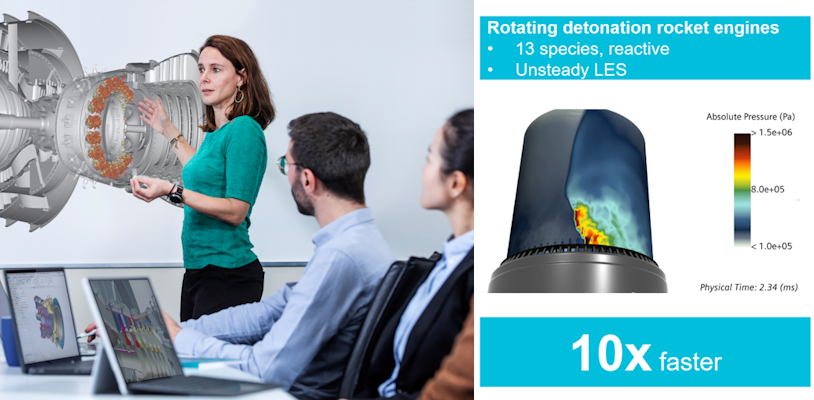
The webinar with Siemens Energy was held in June. Just before ASME Turbo Expo 2024 that took place in London (June 24–28, 2024). There were like always a lot of interesting papers and discussions taking place. Some very good research was coauthored by a company called MORFO Design. They, together with their partners in Italy and Europe, have done some of the best engineering when it comes to gas turbine simulations. To get an understanding of the extremely pertinent papers on gas turbine simulations that have been presented at ASME Turbo Expo, kindly consult the final section of this blog.
Exploring the latest advancements in gas turbine simulations
The logo of MORFO Design showcases a butterfly, which symbolizes advanced aerodynamics. I managed to catch this butterfly for a webinar, where we delved into the latest advancements in gas turbine simulations, including:
- Introduction to Gas Turbine Simulations: Understanding the basics and importance of simulations in optimizing gas turbine performance.
- Technological Innovations: Explore cutting-edge simulation technologies and software that enhance accuracy and efficiency.
- Case Studies: Real-world examples showcasing successful applications of gas turbine simulations in various industries.
- Future Trends: Insights into emerging trends and future directions in gas turbine simulation research and development.
Whether you’re an engineer, researcher, or industry professional, this webinar (available on demand) will provide valuable knowledge and practical insights to help you stay ahead in the field.
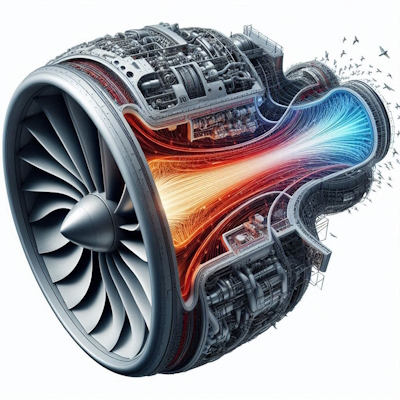
Prompt: “A cut-through of a jet engine showing airflow paths and the combustion chamber”. The butterflies coming out at the end were added by DALL-E automatically. Maybe it is a bug? Or is it the butterfly effect?
Further reading from ASME Turbo Expo 2024
To explore more on gas turbine simulations, you can make use of the ASME Digital Collection library and conduct a search for the following papers.
Examples of papers MORFO Design authored:
- A Real-Time AI-based Strategy For The Design Of A Low-Pressure Turbine Profile – GT2024-128809, Bellucci et al.
- Detailed Characterization Of Turbulence Intensity And Dissipation As Boundary Condition For 3D RANS Simulations – GT2024-128617 Bologna et al.
- A Collaborative Framework For Design And Validation Of Next-Generation Transonic Low-Pressure Turbines – GT2024-123820, Cernat et al.
Examples of papers Siemens authored:
- CFD Speedline Simulations Of High Work Radial Compressor Stages – GT2024-128772, Zhuang et. al.
- CFD Meshing And Simulation Best Practices For A Turbine Stage With Squealer Tips; Trailing-Edge Cooling And End-Wall Cooling Injection – GT2024-124825, Scheuerer et al.
- LES And POD/DMD Analysis Of Thermoacoustics Of A Hydrogen Flame Pair – GT2024-123589, Kroniger et al.
- GPU Accelerated LES-FGM Modelling For Industrial Combustion Applications – GT2024-122041, McManus et al.
- Meanline Design And Aerodynamics 3D RANS Investigations Of A Multistage Helium Axial Compressor – GT2024-128129, Prabhakar, A.
